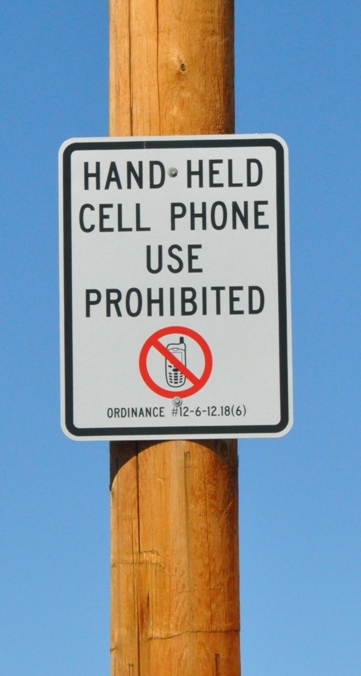Yesterday, the 5th Circuit Court of Appeals denied the FCC Shot Clock appeal promoted by the City of Arlington, Texas and the City of San Antonio, Texas. For the foreseeable future, the Shot Clock will remain with us. Here is the decision: CITY OF ARLINGTON, TEXAS; CITY OF SAN ANTONIO, TEXAS v. FCC.
Although the Mayan Calendar predicts the end of the world on December 21st, 2012, it seems unlikely that the FCC Shot Clock will be the cause. It also seems unlikely that a petition for Certiorari will be favorably reviewed by the U.S. Supreme Court given the nature of the ruling, and the lack of a split among the various Circuits.
This appeal grew out of the FCC’s adoption of its wireless tower siting Shot Clock rule in 2009 (click here to read the FCC’s Shot Clock Declaratory Ruling) setting deadlines for governments to process to a decision wireless site applications “within a reasonable period of time” (see 47 U.S.C. § 332(c)(7)(B)(ii).
In its ruling, the FCC interpreted Congressional intent regarding § 332(c)(7)(B)(ii) to define the reasonable time as being 90 days for a collocation site, and 150 days for a new site and other types of applications. 47 U.S.C. § 332(c)(7)(B)(v) requires that when there is a failure to act on an application within the applicable time period, the aggrieved party (usually the carrier) should file a suit with a court of competent jurisdiction within 30 days and that “[t]he court shall hear and decide such action on an expedited basis.”
So, what does this mean for local governments? Likely not too much for now.
Most local governments, since the Commission’s adoption of the Ruling, have taken the order in stride and tried to comply. Most carriers have done the same thing. Most times, when the 90 or 150 day clock was about to run out, the carrier and government would enter into a tolling agreement (by mutual agreement to stop the Shot Clock where it was, so that everyone would have some breathing room to keep working on a project).
Why are tolling agreement needed? Even the Commission recognized the value of such agreements when it said,
We conclude that a rigid application of this cutoff to cases where the parties are working cooperatively toward a consensual resolution would be contrary to both the public interest and Congressional intent. Accordingly, we clarify that a “reasonable period of time” may be extended beyond 90 or 150 days by mutual consent of the personal wireless service provider and the State or local government, and that in such instances, the commencement of the 30-day period for filing suit will be tolled.
(FCC Shot Clock Order @ 49)
As someone who reviews and processes wireless site applications for many local governments, the most important clock is not 90 or 150 day clocks; it’s the first 30 day ‘application deemed complete’ clock.
The FCC said of this first 30 days,
[A] review period of 30 days gives State and local governments sufficient time for reviewing applications for completeness, while protecting applicants from a last minute decision that applications should be denied as incomplete. Accordingly, we conclude that the time it takes for an applicant to respond to a request for additional information will not count toward the 90 or 150 days only if that State or local government notifies the applicant within the first 30 days that its application is incomplete.
(FCC Shot Clock Order @ 53)
Some states, including California, already provide for an initial 30 day review period for application completeness (in California see Gov. Code § 65943). Unlike the California law, however, which ‘resets’ the clock back to zero if an application is returned incomplete within the first 30 days, the FCC shot clock simply stops where it is at the time the incomplete notice is issued. If the local government takes 25 days to review a project for completeness, and returns the application as incomplete on that day, it only has 5 more days to review the project when resubmitted.
Because the FCC first 30 day clock is the toughest to deal with, local governments will be well-served to create carefully-crafted and very detailed applications that make incomplete submissions easy to detect. For an example of a wireless application form that is both detailed and highly structured, take a look at the one I’ve maintained for nearly a decade and which is used in one form or another by various jurisdictions around the country: CLICK HERE.
PRACTICE TIP
I believe that local governments will be best served by a combination of a carefully-crafted wireless siting application facilitating an easy completeness check, coupled with the requirement that wireless site applications only be filed by appointment where legally permissible.
Taking in and reviewing a complex wireless siting project and the underlying thorough siting application and data can take an hour or more.
By requiring appointments, a government planner can allocate sufficient time to take in and review the application at the time it hits the counter. Any facial omissions or errors can be identified during the intake, and the planner can immediately log in the project and simultaneously issue the applicant with an incomplete letter at the same time. This approach will blunt the worst impacts of the 30-day clock by never allowing it to start for facially incomplete or incorrect applications.
♫ ‘A siting we shall go; a siting we shall go…’ ♫





